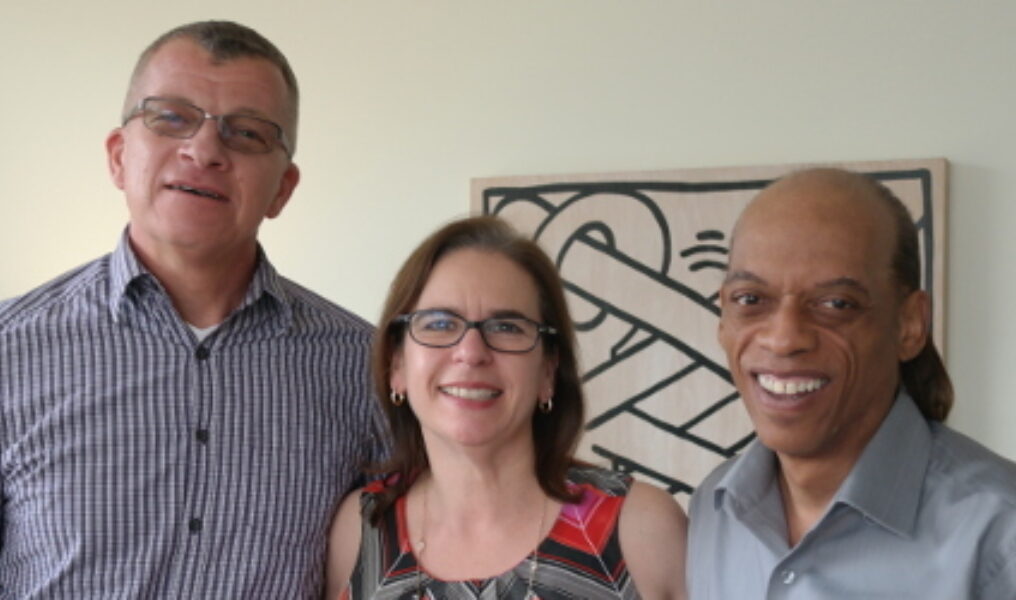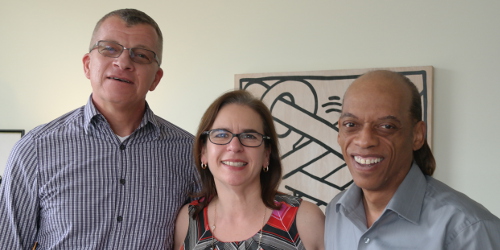BY AJ TRAGER
DETROIT – Following a trend that is affecting AIDS Service Organizations (ASOs) around the country, AIDS Partnership Michigan and HIV/AIDS Resource Center decided to work toward a formal merger of their organizations on Jan. 1.
"One of the things that we felt really strongly when entering into this process and thinking about a merger is, we didn't want it to seem like APM was taking over HARC or HARC was taking over APM. So we wanted to really approach this as two equals and recognize the changes that have happened over HIV funding, but in terms of the needs of people living with HIV or at risk for HIV – really thinking about how we want to identify ourselves and what kind of organization we want to be," said Jimena Loveluck, president/CEO and executive director of HARC.
The two organizations will continue to act as APM and HARC, but by fall they plan to launch the combined organization, equipped with a new name, new logo and new brand identity. The merged organization will include broader services targeting STD and STI prevention and will continue to provide HIV/AIDS services.
APM, founded in 1983 and HARC, founded in 1986, have worked together for more than 14 years through the HIV/AIDS Alliance of Michigan, AIDS Walk Michigan, the StatusSexy campaign and through involvement as community partners of the University of Michigan Center for Sexuality and Health Disparities. Together they provide HIV prevention and direct care services to 10 counties in southeast Michigan.
Around the U.S. HIV/AIDS organizations have been merging so they can continue to provide services to their area communities. Changes in the Affordable Care Act put pressure on ASOs to emphasize biomedical approaches to HIV and integrate HIV/AIDS services with broader health care systems. Because of changes in how funding is allocated to HIV/AIDS non-profit organizations, APM and HARC decided to merge their two agencies to better serve the southeast Michigan community.
Negotiations on the merger started in 2013 when APM and HARC recognized that funding garnered through the Ryan White CARE Act, a program administered by the U.S. Department of Health and Human Services, was shifting with the implementation of the Affordable Care Act.
"The merger just made logical sense," William VanHemert, president and chief executive officer of APM said. The two organizations are dedicated to serving the southeast Michigan community. Both have case management and prevention services although HARC has developed harm reduction services and APM provides behavioral health services. With complementary services and programming, merging the two to form a bigger organization allows for expansion and new innovative models that will better serve the 10 counties. It also helps diversify their funding, making them less dependent on state and federal grant funding.
The agencies received a grant from the AIDS United Sector Transformation Initiative to facilitate the merger. These grants provide technical assistance and consultations to ASOs to help with restructuring. Michigan is one of four states still receiving funding from the Initiative because APM/HARC and similar agencies are considered "on track" with national progression of HIV/AIDS prevention and treatment services.
Large Footprint
"One of the things we know is that as a combined organization, we have the largest footprint of any community based organization right now. I'm not going to even call us an AIDS organization. Particularly in terms of when we look at the HIV epidemic, but also when we look at the STDs and hepatitis and all those other things," said Hank Milbourne, vice president of programs and operations at APM.
People living with HIV/AIDS need primary care providers that are well versed in the disease. ASOs like APM/HARC have spent decades working on prevention and treatment and are experienced in handling clients affected by the disease and treating the person as a whole, whether it involves substance abuse issues, behavioral health problems or treating physical health concerns.
Expanding patient services will allow APM/HARC to apply for a more diverse range of funding, create opportunities for APM/HARC to showcase their work on the state and national level, participate in national conferences, talk about projects that other communities and organizations can adopt, engage in community research and provide consulting and technical assistance to other organizations that want to develop similar projects.
"I don't want it to sound like we are saying bigger is better necessarily," Loveluck said. "We want to have greater impact when it comes to our clients. We want to have greater advocacy that particularly affects our clients and this includes research sharing. For our clients, really nothing has changed with the merger. Their services have continued as they always have and they will go to the same office and work with the same case managers or testing counselors. So, we've tried to make it a really seamless process for our clients."
The new organization will serve any individual who is in need of services be it a neighborhood, individual, storefront, church, other ASO or community organization. Michiganders may now have more comprehensive access to healthcare through the ACA; however, the local numbers of people living with HIV/AIDS remains too high.
"Our roots are within the LGBT community and we don't want to forget that. We are proud of that. We don't want to dismiss it," Milbourne said. "That community actually touches on other fringes or intersections, other parts of the community that are impacted by other health disparities, too. So while we may continue to use that as a foundation, that is kind of like a stepping stone to reach out to other people who may also need services. Services that we have developed specialized skills for that we can help with."
HIV Stigma Index
In 2014, APM in partnership with the University of Pittsburgh through a substantial National Institutes of Health grant, surveyed 300 black men who have sex with men (MSM) with the goal of gathering regional data on those affected by HIV/AIDS and STDs in Detroit. Some preliminary data has come back in what will be known as the HIV Stigma Index, and the biggest surprise for Milbourne, who will continue to work on the ground with those who are most affected by the disease, was that of the people tested, one-third of those tests came back positive. "That number is much higher than I thought," he said.
Between 45 and 50 percent of the population who is testing positive, nationally and locally, are black MSMs. There is an increase in rates between ages 20 to 24.
"The thing is that we have seen these rates for the last 15 years. Every year we still have the same number of people getting infected. It's nice that it's staying constant, but we need to bring it down if we want to do away with HIV in our community. And part of doing that is looking beyond behavior and that is why we want to look at the other social determinants that impact a person in terms of their health status," Milbourne said.
Research shows that black MSMs don't participate in any riskier behavior, have fewer sexual partners and their level of HIV/AIDS education is higher, but they are still contracting the disease at a higher rate than their white counterparts, Milbourne says. Such a discrepancy must be due to other factors, he adds.
"Right now the biggest percentage for HIV is still African-Amercian MSMs within that (LGBT) community," VanHemert said. "We are hearing that the trans community really needs services and (knowledge of) where they can get services. So once again it's about treating the person as a whole and their health as a whole. So we want to go that way. We want to be that agency. We always have been part of the community. We try to strive for the best services within that community."
The Community Foundation for Southeast Michigan gave APM and HARC a grant to assist with the merger implementation stage and the marketing and development of the rebranding. Once that process is final, VanHemert will be president and CEO, Loveluck will be vice president of community research and innovation and Milbourne will be vice president of programs and operations.
Both boards had 12 individuals and will combine to have one integrated board; six that were prior APM and six that were prior HARC. Loveluck, Milbourne and VanHemert will serve as staff liaisons to three committees that each board member will be a participant in.
"Some of the taglines we used were ‘Onward and Upward' or ‘Moving Forward,' but now it is ‘We Are Stronger Together' and that concept," VanHemert said.











